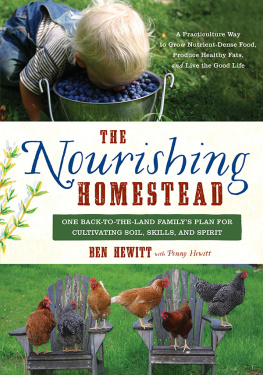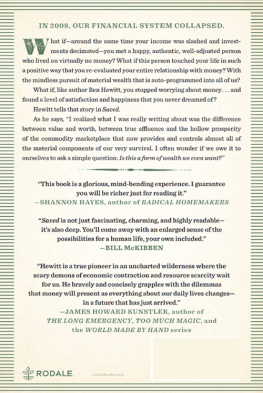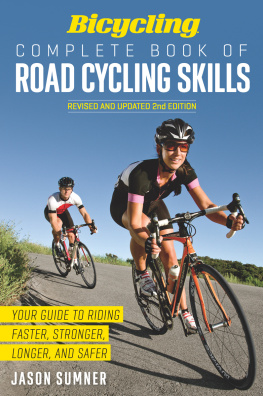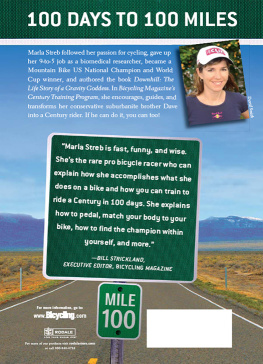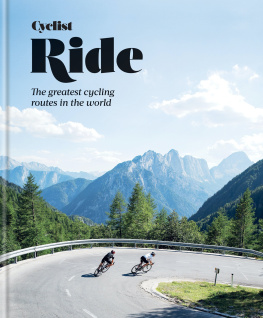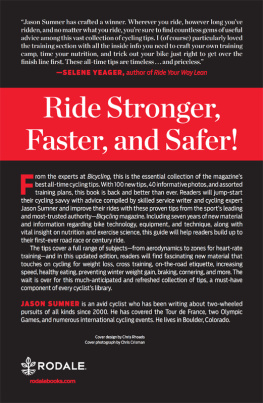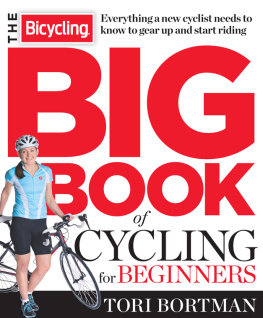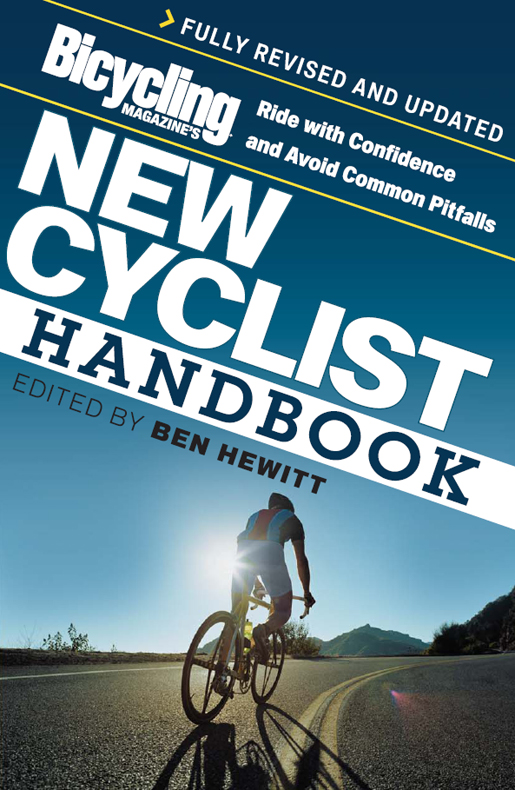CONTENTS
INTRODUCTION
I f youre reading this, youve been bitten. You may not even know it yet, but its true: The cycling bug has got you and got you good. How do we know? Because the difference between someone who rides a bike (which applies to most of the worlds population) and a cyclist (which you are about to become) is the desire to improve their riding. It is one thing to pedal a bicycle down a road or trail without thinking about the art and science behind it; its entirely another thing to dissect the sport in search of improvement and increased enjoyment. Simply by picking this book off the shelf (or having someone who knows you well pick it for you), youve proved that you belong in the latter category.
Think of this book as an owners manual for you, the cyclist. After all, your new bike came with an owners manual; why shouldnt you have one, too? There are no secrets in this book, but there is plenty of wisdom collected from some of the sports most experienced riders, people who are, in one crucial respect, just like you: bitten. Their wisdom and experience will help you avoid common mistakes and get more smiles out of your riding.
Dont feel as if you need to read this book in one sitting. In fact, please dont read this book in one sitting. Instead, read a chapter or two, go for a ride or two, and then read some more. Repeat this process a few times, until youve reached the end. At which point, youll be at the beginning of something far bigger and better: your life as a cyclist.
PART ONE
THE BIKE (AND A FEW OTHER ESSENTIALS)
1
CHOOSE THE RIGHT BIKE
I f youre reading this book, you probably already have some idea what sort of cycling appeals to you. And thats a very good thing, because like most sports, the sport of cycling has become highly specialized and fractured, to the point where the word bicycle doesnt mean a heck of a lot.
Sure, modern bikes, just like their predecessors, have two wheels, a saddle, pedals, and a handlebar. But thats where the similarities end. These days, a bicycle can be built for the road, the trail, or a bit of both. If its built for the road, it might be designed for touring, road racing, or commuting. It might have a single gear, or as many as 30. It can have shocks on both the front and back. Its frame could be hewn from steel, aluminum, carbon fiber, titanium, or any combination. The point is, the word bicycle is no longer adequate to describe two-wheeled, pedal-driven machines except in the most general sense.
Thats why its important to have a clear understanding of what type of cycling you want to do before you go shopping. Otherwise, youre not just stepping through the doors of a bike shop: Youre opening the gates to massive confusion and setting yourself up to make a purchase youll regret.
Even if youre sure you know exactly what you want, keep reading. Maybe something you see in the following pages will spark your interest and send you in a new direction. And maybe that will be the direction that lays the foundation for a lifetime of cycling. Consider: In the 1990s, nearly 75 percent of all adult bicycles purchased were mountain bikes. Its a striking statistic, especially when you consider that, like autos, there are many other types of bikes. Making it even more remarkable is the fact that most of these mountain bikes are never ridden on anything but pavement. So why are so many people buying them?
Perhaps its peer pressure or herd mentalitykeeping up with friends or the neighbors. Maybe its a lifestyle decisionmountain biking has become cyclings cool image. It could be simple impulseyou need a way to exercise, and mountain bikes beckon because you see them everywhere. Or it could be the attraction of rugged durability and a comfortable upright riding position.
Nothing is gained by knocking these reasons. After all, anything that attracts people to cycling should be applauded. But because there are different types of bikes for different purposes, a mountain bike may not be the best choice for everyoneor even for 75 percent of everyone. If you buy the type of bike that matches your reason for riding, youll be happier and stay with the sport longer.
How can you reach the right decision? The first step is to decide which features are advantageous for your type of riding and which could actually work against it. To help, heres a checklist.
Consider your goals in cycling. Do you imagine yourself winning a race? Commuting to work? Exploring backcountry trails? Will you use your new bike for weekend touring, bike club outings, or daily rides for exercise? Once you pin it down, talk with like-minded people and learn what type of bike works best for them. (You can meet them through your local bike club or shop.) They may even let you give their bikes a try. Ideally, youll be able to experience the attributes of the three main types: road, mountain, and hybrid or cross bikes, which combine features of both. You can also take test rides at bike shops that offer them (in fact, this is a good litmus test for a shop: If it doesnt allow test rides, it might not be the shop for you).
Ponder the riding possibilities in your area. Are you blessed with miles of scenic, lightly traveled paved roads? Is there a network of dirt roads or trails? Safe bike lanes for traveling on city streets? Youll ride more and heighten your cycling enjoyment if you get a bike that lets you take advantage of your areas best opportunities.
Analyze your personality and tendencies. Are you a win-at-all-costs athlete rather than the fun-oriented, recreational type? Do you put a premium on having the latest technology? Are you forever tinkering and upgrading things you buy? If you answer yes to these questions, youll be happiest with a top-of-the-line model. Or are you a person who probably wont notice a bikes components until something goes wrong, and then youll take it to a shop for service? If so, basic equipment will suffice and protect your budget as well.
Consider what sort of riding your friends do or, if none of your friends ride, what sort of group rides take place near your home. Cycling can be a great social sport and a fantastic way to meet people and bond with them. But thats not going to happen if you buy a road bike and the only group rides in your area are off road.
Model Selection
Now that we got that out of the way, lets take a look at the hardware. To the uninitiated, walking into a modern bike shop can feel overwhelming: so many bikes, in so many forms. But look a little closer, and youll see that each is engineered for maximum performance and enjoyment... so long as you use it as the manufacturer intended. Heres how to decipher the rolling hardware.
Road Racers
These are cyclings thoroughbreds. Their drop handlebars promote a low, aerodynamic posture for greater speed with less effort, while offering the widest range of hand positions for comfort. The narrow rims and tires are lighter and more efficient than those found on mountain bikes or hybrids. Once reserved for serious athletes, the road racing bike has enjoyed a renaissance of sorts, thanks in part to Lance Armstrong and in part because manufacturers realized that the style could appeal to more riders with a few simple tweaks. The result? Some modern road bikes are equipped with mountain bikelike triple front chainrings for easier climbing, and a new generation of comfort road bikes features a mildly upright riding position to ease strain on tender backs and shoulders. That said, if outright speed is your quest, you can still buy a no-holds-barred racing machine with double front chainrings and a hunched-over, aerodynamic riding position.


